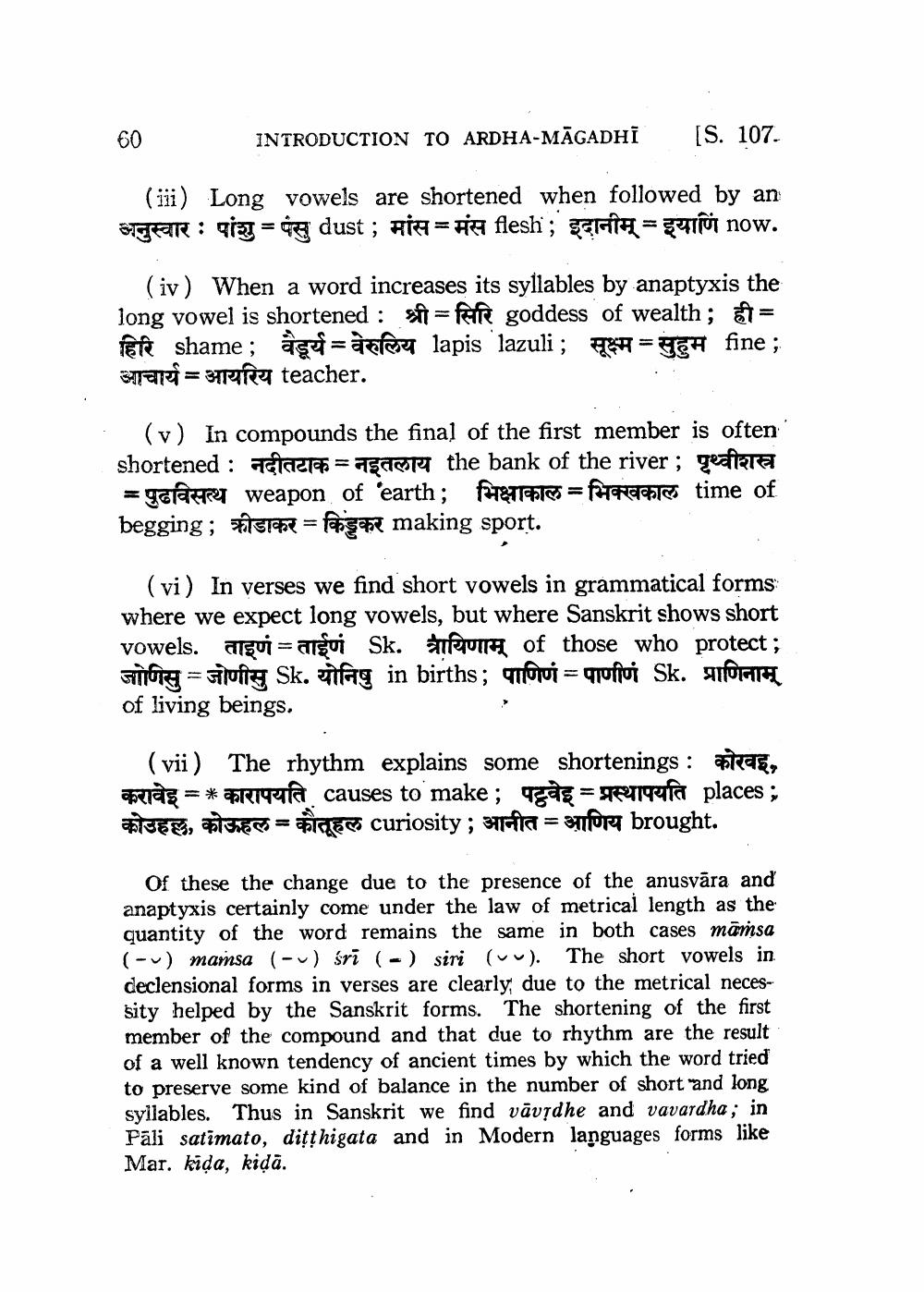________________
60
INTRODUCTION TO ARDHA-MĀGADHI
(S. 107.
(iii) Long vowels are shortened when followed by an Bear : qiz = 48 dust ; RA= A flesh; SFERA = 5410 now.
(iv) When a word increases its syllables by anaptyxis the long vowel is shortened : श्री = सिरि goddess of wealth; ही =
shame; aşef=aarsu lapis lazuli; FEHE TEA fine ; Grei= 3rfe teacher.
(v) in compounds the final of the first member is often shortened : Acacia = or the bank of the river; gezinta = geraakt weapon of 'earth; f27a7ales = fuprafales time of begging ; क्रीडाकर = किड्डकर making sport.
(vi) In verses we find short vowels in grammatical forms where we expect long vowels, but where Sanskrit shows short vowels. ताइणं = ताईणं Sk. नायिणाम् of those who protect; GOTE = Flug Sk. gfag in births; quoi = quoftui Sk. aforaire of living beings.
(vii) The rhythm explains some shortenings : atas, aprange = * friqlat causes to make; base = trufa places; HISEE, E = Es curiosity ; 37rafia = stora brought.
Of these the change due to the presence of the anusvāra and anaptyxis certainly come under the law of metrical length as the quantity of the word remains the same in both cases mõisa (-u) mamsa (-u) sri (-) siri (vv). The short vowels in declensional forms in verses are clearly due to the metrical necessity helped by the Sanskrit forms. The shortening of the first member of the compound and that due to rhythm are the result of a well known tendency of ancient times by which the word tried to preserve some kind of balance in the number of short and long syllables. Thus in Sanskrit we find vāvīdhe and vavardha, in Pāli satimato, ditthigata and in Modern languages forms like Mar. kida, kidā.




